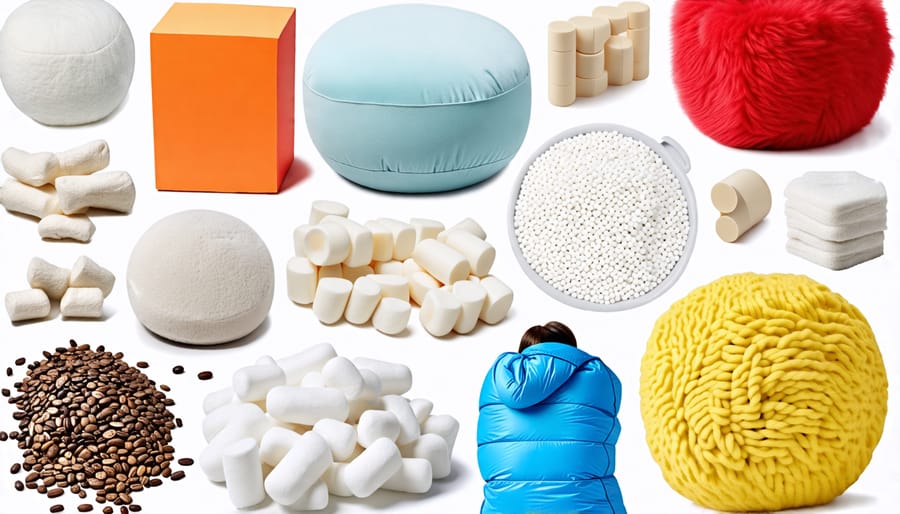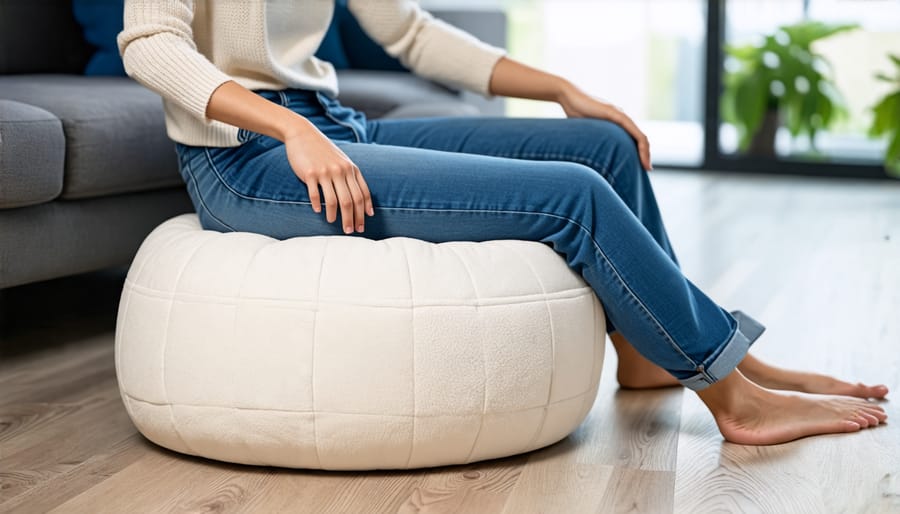Unlock the secrets of creating the perfect pouf with our expert guide on filler materials. From budget-friendly options like old clothes and recycled foam to luxurious choices such as buckwheat hulls and natural latex, discover the ideal solution for your home decor needs. Learn insider tips on maximizing comfort, achieving the desired firmness, and maintaining your pouf’s shape over time. Whether you’re a DIY enthusiast or simply seeking the best ready-made fillers, our comprehensive overview empowers you to make an informed decision and create a pouf that perfectly complements your living space. Get ready to elevate your interior design game and enjoy the ultimate in cozy seating with our expert-backed recommendations for pouf fillers that deliver both style and substance.
Beans: A Classic Choice
Beans are a classic choice for filling poufs, and for good reason. Their density provides excellent support, ensuring that your pouf maintains its shape even after repeated use. Beans are also highly affordable compared to other fillers, making them a budget-friendly option for those looking to create a stylish and functional seating solution without breaking the bank.
One of the most significant advantages of using beans as a pouf filler is their ability to contour to your body. As you sit or lean on the pouf, the beans shift and mold to your shape, providing a comfortable and supportive experience. This adaptability makes bean-filled poufs ideal for relaxing in various positions, whether you’re sitting upright or lounging.
When filling a pouf with beans, it’s essential to use a durable inner liner to contain the beans and prevent them from spilling out. A sturdy fabric, such as canvas or heavy-duty cotton, works well for this purpose. Pour the beans into the liner, ensuring an even distribution throughout the pouf. Aim to fill the pouf to about 80% capacity, as this allows room for the beans to shift and mold without becoming overly rigid.
To maintain the shape and comfort of your bean-filled pouf, it’s a good idea to refill it periodically. Over time, the beans may compress, leading to a flatter appearance. Simply open the inner liner and add more beans as needed to restore the pouf’s original shape and support. With proper care and maintenance, a bean-filled pouf can provide comfortable and stylish seating for years to come.

Memory Foam: Sink-In Comfort
Memory foam, known for its plush, sink-in comfort, is another excellent choice for filling your pouf. This viscoelastic material contours to your body, providing pressure relief and a soft, supportive feel. Memory foam is also highly resilient, quickly bouncing back to its original shape after use, ensuring your pouf maintains its form over time.
When using memory foam as a pouf filler, opt for high-density foam for the best durability and support. You can purchase memory foam in block form or salvage it from an old mattress or pillow. To prepare the foam, cut it into smaller, uniform pieces using a sharp knife or electric carving knife. This will make it easier to stuff the foam evenly into your pouf cover.
As you fill the pouf, compress the memory foam pieces to ensure a dense, compact fill. This will help prevent lumps and give your pouf a smooth, polished look. Continue stuffing the foam until the pouf reaches your desired level of firmness and shape.
One advantage of memory foam is its moldability. After filling your pouf, you can manually shape it to achieve the perfect form, whether you prefer a more rounded or structured look. The foam will hold its shape, creating a custom-tailored pouf that perfectly complements your space.
Keep in mind that memory foam can be sensitive to heat and may soften in warmer environments. If your pouf will be placed in a sunny or warm room, consider using a breathable cover material to help regulate the foam’s temperature and maintain its shape.

Old Clothes and Linens: Eco-Friendly Filler
Looking for an eco-friendly way to fill your pouf? Consider repurposing old clothes, towels, and bedding that are taking up space in your closets and drawers. Not only is this a sustainable option, but it also gives new life to items that might otherwise end up in a landfill. To prepare your materials, start by sorting through your old textiles and selecting pieces that are clean and free of holes or stains. Cut larger items into smaller, more manageable pieces to ensure even distribution within the pouf. As you fill the pouf, be sure to compress the materials periodically to create a firm, comfortable seat. You may need to adjust the filling over time as the materials settle, but with a little care and attention, your upcycled pouf will provide a cozy spot to relax for years to come. Embrace the opportunity to get creative with your color and texture combinations, mixing and matching different fabrics for a unique, personalized look. By choosing to repurpose old clothes and linens as pouf filling, you’re not only reducing waste but also creating a one-of-a-kind piece that reflects your commitment to sustainable living.
Packing Peanuts: Lightweight and Low-Cost
Packing peanuts, those familiar foam nuggets used to protect shipped goods, can also serve as an excellent pouf filler. Their lightweight nature ensures your pouf remains easy to move and manipulate, while their affordability makes them a budget-friendly choice for your DIY project. Simply pour the packing peanuts into your pouf cover, using your hands to distribute them evenly and achieve your desired shape.
One key advantage of packing peanuts is their ability to conform to your body’s contours when you sit or lean on the pouf, providing a comfortable and supportive experience. To keep the peanuts contained and prevent them from spilling out, consider using a large plastic bag or liner inside the pouf cover. This will also make it easier to refill or adjust the peanuts as needed over time.
When filling your pouf with packing peanuts, be sure to fill it generously to ensure a plump, well-shaped final product. You can always remove excess peanuts if needed, but a densely packed pouf will hold its shape better and offer more support. With a little patience and experimentation, you’ll find that packing peanuts are an excellent choice for creating a cozy, inviting pouf that perfectly suits your space.
Conclusion
In conclusion, there are several options for filling your pouf, each with its own unique benefits. Recycled polystyrene beans are lightweight and affordable, while memory foam provides superior comfort and support. Shredded foam is a versatile option that allows for easy customization, and natural materials like buckwheat hulls and dried beans offer an eco-friendly alternative. Ultimately, the best filler for your pouf will depend on your specific needs and preferences.
When deciding on a filler, consider factors such as comfort, support, durability, and ease of maintenance. Don’t be afraid to experiment with different materials to find the one that best suits their preferences and complements your home decor style. With the right filler, your pouf can become a cozy and inviting addition to any room, providing both comfort and aesthetic appeal for years to come.
